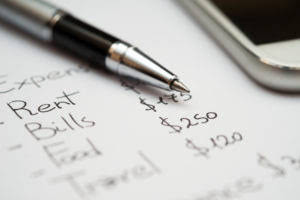- Your cart is empty
- Continue Shopping
Double-Declining Balance DDB Depreciation Method Definition With Formula

The key distinction is that the rate of depreciation is more aggressive during the initial years when employing the double declining balance method. It reflects the asset’s reduction in value due to wear and tear, obsolescence, or age. Depreciation helps businesses match expenses with revenues generated by the asset, ensuring accurate financial reporting.
Example of the double declining balance method

An evenly allocated depreciation expense would give companies an disadvantage when using depreciation expense as a tax deduction. Depreciation, while a non-cash expense, has a profound impact on a company’s cash flow. By reducing taxable income, depreciation lowers the amount of taxes a company needs to pay, thereby preserving cash. This tax shield effect is particularly beneficial for businesses with significant capital investments, as it allows them to retain more cash for operational needs, debt servicing, or reinvestment. For instance, a company that invests heavily in machinery can leverage depreciation to reduce its tax burden, freeing up cash that can be used to finance further growth or improve liquidity. In this, the depreciation rate is twice the rate used in the straight-line method.
- By influencing net income and cash flow, depreciation alters the perceived profitability of an investment.
- Say a company buys a machine for $10,000 and expects it to have a useful life of 5 years and no salvage value.
- The straight-line method, on the other hand, calculates depreciation expenses by dividing the cost of the asset by its useful life.
- A company may choose from different methods of depreciation for financial reporting purposes.
Types of Depreciation Methods
- However, there are also some disadvantages to the Double Declining Balance method.
- By following these steps, you can accurately calculate the depreciation expense for each year of the asset’s useful life under the double declining balance method.
- We have helped accounting teams from around the globe with month-end closing, reconciliations, journal entry management, intercompany accounting, and financial reporting.
- The double-declining-balance method requires the use of a depreciation rate that doubles the rate of a straight-line depreciation.
- In a straight-line depreciation method, the asset will be depreciated uniformly over 10 years at 10%.
- The double-declining-balance method, allocating higher depreciation expenses in the early years of an asset’s uses, can better match cost with benefit from an asset use.
- He is a CFA charterholder as well as holding FINRA Series 7, 55 & 63 licenses.
The double declining balance method accelerates depreciation, resulting in higher expenses in the early years, while the straight line method spreads the expense evenly over the asset’s useful life. Each method has its advantages, suited to different types of assets and financial strategies. Overall, straight-line depreciation is a simple and widely used method for calculating the depreciation of an asset over its useful life.
- When evaluating new projects or asset purchases, companies must consider the depreciation method that will be applied, as it impacts the projected net income and cash flow.
- Accelerated depreciation is any method of depreciation used for accounting or income tax purposes that allows greater depreciation expenses in the early years of the life of an asset.
- DDB depreciates the asset value at twice the rate of straight line depreciation.
- Those assumptions affect both the net income and the book value of the asset.
- Under the straight-line method, the 10-year life means the asset’s annual depreciation will be 10% of the asset’s cost.
- For example, if an asset is expected to have a long useful life or if the asset’s value is expected to decline evenly over time, the straight-line method may be a better choice.
- Units-of-production may cause unpredictable profit swings based on the amount of output an asset generates.
Depreciation and Cash Flow
Since depreciation expense reduces net income, it also impacts retained earnings, a component of shareholders’ equity. A higher depreciation expense in the initial years, typical of accelerated methods like the double-declining double declining balance method balance, can lead to lower retained earnings early on. This reduction can affect dividend policies and the company’s ability to reinvest in growth opportunities, as retained earnings are a primary source of internal financing.

The double-declining balance (DDB) method is a type of declining balance method that instead uses double the normal depreciation rate. The double-declining-balance method of depreciation is a form of accelerated depreciation. This means a greater percentage of depreciable asset’s cost will be expensed in early years of the asset’s life https://www.bookstime.com/ and therefore less in the later years (compared to equal amounts using straight-line depreciation). Under this accelerated method, there would have been higher expenses for those three years and, as a result, less net income. This is just one example of how a change in depreciation can affect both the bottom line and the balance sheet.
Using the straight-line method, the company would expense $2,000 per year for five years. With the constant double depreciation rate and a successively lower depreciation base, charges calculated with this method continually drop. The balance of the book value is eventually reduced to the asset’s salvage value after the last depreciation period. However, the final depreciation charge may have to be limited to a lesser amount to keep the salvage value as estimated. Straight-line depreciation is calculated by dividing the cost of the asset by its useful life.

The double declining balance method offers faster depreciation, suitable for assets that lose value quickly, while the straight line method spreads costs evenly over the asset’s useful life. By following these steps, you can accurately calculate the depreciation expense for each year of the asset’s useful life under the double declining balance method. This method helps businesses recognize higher expenses in the early years, which can be particularly useful for assets that rapidly lose value.
ACRS (Modified Accelerated Cost Recovery System)
- On the other hand, with the double declining balance depreciation method, you write off a large depreciation expense in the early years, right after you’ve purchased an asset, and less each year after that.
- Certain types of property are allowed to depreciate using the 150 percent or 200 percent declining balance method, which allows for increased depreciation in the early years of ownership.
- By using a higher depreciation rate in the earlier years, the method can better reflect the asset’s decline in value and estimate its residual value more accurately.
- The double-declining-balance method of depreciation is a form of accelerated depreciation.
